The history of the world’s nobility is filled with extravagance, wealth, and, more than often, with arrogance. In all corners of the globe, aristocrats and nobles, kings and young princes, were all deemed to be untouchable, larger than life and protected by divine rights . To lay one’s hand on a nobleman was often a transgression punishable in the most severe way, sometimes even by death. So how then do you go about reprimanding a young schoolboy, who also happens to be your king, his heir, or simply a very highborn lad? Throughout history, these noble boys and girls often had special tutors, who would teach all the advanced subjects. But they also had to revert to good old whipping in order to punish bad results, because a child is a child, no matter how highborn. Enter the whipping boy! Let’s learn more about one of the great injustices of the medieval world: taking a beating meant for someone else!
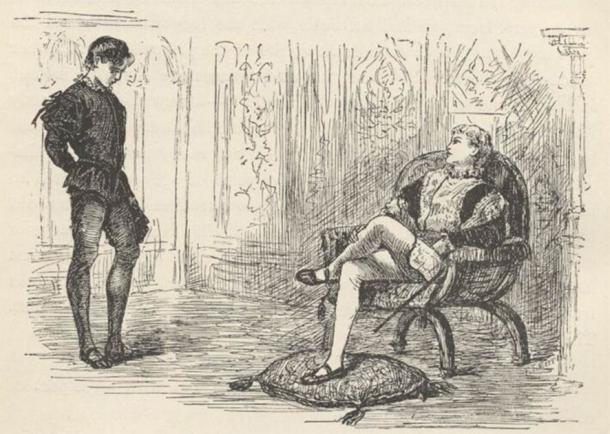
The concept of the whipping boy uncovers the skewed social hierarchy of medieval times. ( Public domain )
Studying the Whipping Boy Concept: Truth or Myth?
The history of the whipping boys – although generally accepted as true – is largely clouded in mystery as scholars were unable to prove it for a very long time. The story of a whipping boy is certainly a story of injustice and mistreatment, and a great insight into the skewed social hierarchy of the early and late medieval period.
At the time, young boys from the upper echelons, be they kings, heirs, princes, highborn nobles, or monarchs of any type, often had whipping boys by their side. These children would be educated alongside the noble student and be on hand to take a beating when required. High ranking children of the era could in no way receive this kind of punishment, as their tutor or teacher almost always lower in social status, and couldn’t lay their hands on these privileged students. Instead, the tutor would beat, or whip, the whipping boy.
One would hope that the act would have a moral effect on the young noble, and that the whipping boy’s suffering would serve as motivation not to repeat their transgressions. But, it is important to remember that schools of that period were not as forgiving as modern institutions. Teachers and tutors were often well within their rights to punish their disobedient and uninterested students in various ways. Kneeling on corn was a common chastising, as was the whipping of palms. However, proper whipping on the back and buttocks was also common, and usually done with a long, thin, and flexible stick.
Even though this was common, many historians today bring the existence of dedicated whipping boys into question. While certain scholars say that their historical existence is a myth, others only limit their role to serving boy monarchs who could not be harmed due to their “divine right.” The divine right, also known as “God’s mandate,” is a doctrine invented by nobles and kings in order to solidify their right to a throne. It purports that such a monarch has been pre-destined and chosen by God to be the King. Well, if you believe that, you’ll believe anything.
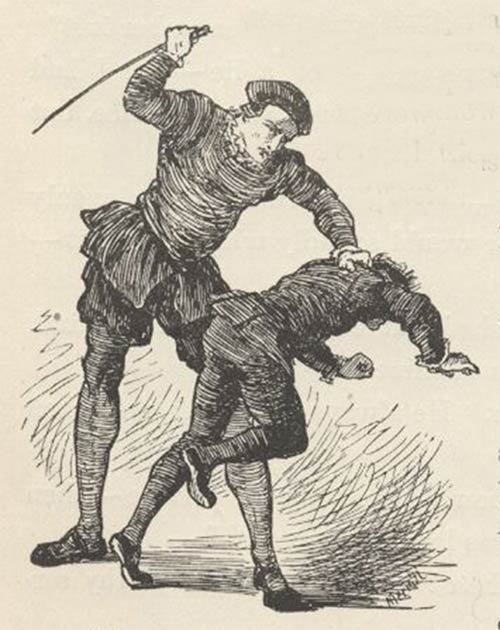
Being a dedicated whipping boy was an uncomfortable ladder towards wealth and power.( Public domain )
An Uncomfortable Ladder Towards Wealth and Power
One puzzling aspect in respect of the accuracy of the whipping boy story, is the fact that several contemporary writings on these subjects do not mention them at all. One notable example is the writer Desiderius Erasmus, one of the greatest scholars and philosophers of the Renaissance. His two major treatises, the 1516 Education of Christian Prince , and the latter 1530 Declamatio de Pueris Statim ac Liberaliter Instituendis , both mention that a tutor is unable to and cannot physically punish a prince or a monarch. However, he in no way mentions whipping boys.
In 1852 however, the famed writer Hartley Coleridge writes that “to be flogged by proxy was the exclusive privilege of royal blood… It was much coveted for the children of the poorer gentry, as the first step in the ladder of preferment.” This quote is crucial in telling us that to be a whipping boy for a prince or a king was certainly a desirable position to be in, and was perhaps reserved for the boys of minor nobility who sought to “rise through the ranks.” Just like some other medieval noble titles, for example the “Groom of the Stool,” being a whipping boy placed the individual in the closest circle of intimacy with royalty. From that position, one could befriend his liege, and learn crucial information, rise to a better position, and so on.
While the existence of whipping boys is still largely debated, one common phrase could indicate that they did in fact exist. Nowadays, the expression “whipping boy” is often used to indicate a scapegoat or a fall guy, in reference to the person who takes the blame unjustly. Or it can simply denote someone who is bullied and victimized. What is more, the idea of the whipping boy has often been explored in modern literature, indicating the presence of the idea and the familiarity we have with this historic concept.
Adventurous of readers will certainly remember A Song of Ice and Fire, a popular series of books from G. R. R. Martin, the author of Game of Thrones . In it, the widely disliked ruling family of Baratheons employ a whipping boy for their youngest members. Another modern work related to the subject is aptly called The Whipping Boy , a children’s book by Sid Fleischman. It tells of the adventures of a young prince and his whipping boy, and how the former learns humility throughout. Another mention appears in the 2002 book Boy King by David Belbin, through a fictional portrayal of historic characters.
If we look at literature throughout history, we can spot important mentions of whipping boys, indicating that they certainly existed in some way or form, even if limited to only a single country or even a single court. The Oxford English Dictionary documents the earliest use of the word whipping boy from a 1647 Bible commentary by John Trapp, the renowned Anglican Bible commentator. In relation to the 1st Timothy, chapter 5, verse 20, he writes:
“Those Presbyters that sin publikely (publically)… and those who were convicted by two or three witnesses… Rebuke before all, yet not as if they were whipping boyes.”
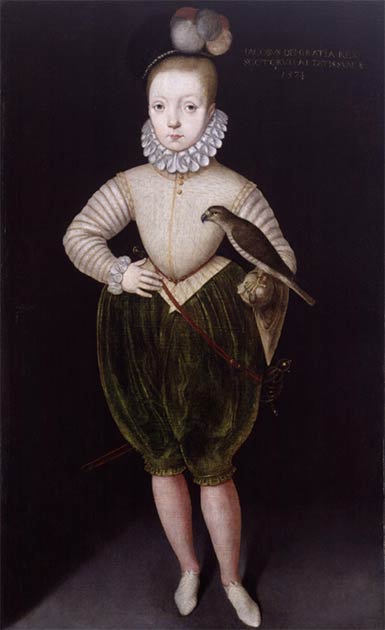
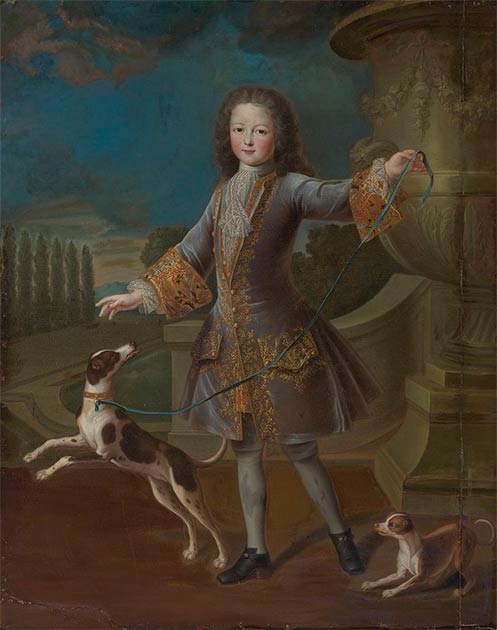
Left: King James I of England and VI of Scotland, seen here as a child, is portrayed by Sir Walter Scott as having a whipping boy in his book The Fortunes of Nigel. ( Public domain ). Right: As a boy, Louis XV is also said to have had a whipping boy. ( Public domain )
Hoping That the Young Prince Would Study
One of the renowned writers of classic English literature , Sir Walter Scott, also touched on the subject in the famous Waverley series. The book The Fortunes of Nigel from 1822 has a character named Sir Mungo Malagrowther , who acts as a whipping boy for the young James VI of Scotland . Walter Scott writes: “ …and [he] appalled the very soul of the youthful King, by the floggings which he bestowed on the whipping boy, when the royal task was not suitably performed.”
Soon after, in 1881, Mark Twain published the novel The Prince and the Pauper , in which he too includes mention of a whipping boy. Here it is written that “James I and Charles II had whipping boys when they were little fellows, to take their punishment for them when they fell short of their lessons; so I have ventured to furnish my small prince with one, for my own purposes”.
All of this tells us that the idea of the whipping boys was indeed present in culture for many centuries, indicating that it did indeed exist at some point. One could also find a wealth of reasons why a monarch would require the presence of a whipping boy. In the medieval world of intrigues, which were almost a necessity on royal courts, physical chastisement done to a heir presumptive or a boy King could be a powerful factor and a cause of undoing for whoever did it. So, how do you punish a noble boy? You hope that the inherent morality of man kicks in, and pity for the whipping boy helps straighten things up.
There are several possible historical appearances of whipping boys that could shed a little light on the subject. While some of them were never completely proven to be accurate, they are nonetheless an important lead. One such example is the youth of Louis XV of France, who later became King, and was known as Louis the Beloved. In the controversial age of French Ancien Regime and bourgeoisie, the boy King’s governess, one Madame de Ventadour, found many young boys to act as his playmates. One of them was a simple cobbler’s son, who would be regularly punished instead of Louis. This was mentioned in 1769 by Marie, Marquise du Deffand, and was seemingly known to all during that era. It is also written that young Louis continued to misbehave and neglect his studying regardless of the beatings the young whipping boy received.
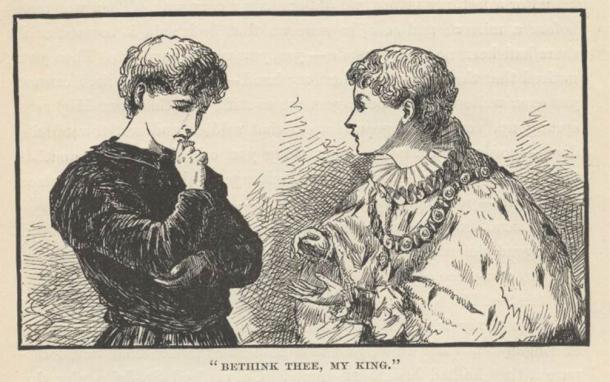
There were benefits to being a whipping boy. Many became close confidants of the nobles they served. ( Public domain )
The Benefits of Becoming a Whipping Boy: Confidant to the King
Equally important is the book History of my Own Time, written in 1723 by Gilbert Burnet, the Bishop of Salisbury and a renowned Scottish philosopher. In it, Burnet writes that William Muray was the page and whipping boy to the future king, Charles I of England . Murray would later become the 1st Earl of Dysart, and also the King’s Groom of the Bedchamber, both very lucrative and high positions. Murray became the first Earl of Dysart and the title is still held by his descendants. Thus it is clear that a bit of unjust whipping he endured as a boy was certainly a fair exchange for the wealth and power he enjoyed later on.
Young Edward VI of England was also mentioned to have had a whipping boy, or a “proxy for correction” to put it differently. This was Barnaby FitzPatrick, son of the 1st Baron of Upper Ossory, also named Barnaby FitzPatrick, who was sent as a hostage to the royal court as a boy. It was written in 1592 by Konrad Heresbach that he was personally told in London that the whipping boy was whipped in front of the young king, especially when the latter uttered swear words and profanities he was not allowed to. Nevertheless, Barnaby FitzPatrick received the highest education at the royal court and was a prominent noble in his life, becoming the 2nd Baron of Upper Ossory.
The concept of the whipping boy existed outside of Europe as well. In the long traditions of the Chinese imperial court, a similar idea existed. Throughout its history, especially during the Qing Dynasty era, there existed the so-called haha juse (哈哈珠子) boys, who studied alongside the young princes. They too could rise to great prominence later in life.
When the future tenth Emperor of the Qing Dynasty, Guangxu, was five years old and beginning his education in 1876, it was written that he was to be appointed a child, which according to the old Manchu Imperial custom, was to study alongside him as a “ha ‘hachutsze,” known in Europe as a souffre-doleur or whipping boy. It was written that whenever the future emperor, called the Son of Heaven, was not paying attention, or was naughty in any way, his whipping boy would be beaten and disgraced in his stead. How effective this was for the Emperor’s education, we know not.
A Critical Study in Empathy
The concept of the whipping boy is really a study in morality and compassion. While the idea is thoroughly unjust, it was nonetheless widely accepted through the late medieval and renaissance periods. It also gave minor nobles the opportunity to rise to far greater positions later in their life by enduring punishments in their childhood.
But the question arises: Is this an effective way of reprimanding an unruly future monarch? The possible answer is tied to the nature of the individual. Those blessed with compassion and empathy would surely do their best not to see their companion harmed. But those who lacked these traits, would grow into tyrants. Power hungry Kings, in the truest sense of the word: opportunistic, cruel, and without care for others.
Top image: Whipping boys were used by aristocrats and royalty. Source: Left; King James I of England and VI of Scotland, Public domain Right; “Edward and Whipping Boy” illustration by Walter S. Stacey, Public domain
Related posts:
Views: 0
 RSS Feed
RSS Feed

















 December 23rd, 2020
December 23rd, 2020  Awake Goy
Awake Goy  Posted in
Posted in  Tags:
Tags: 
















